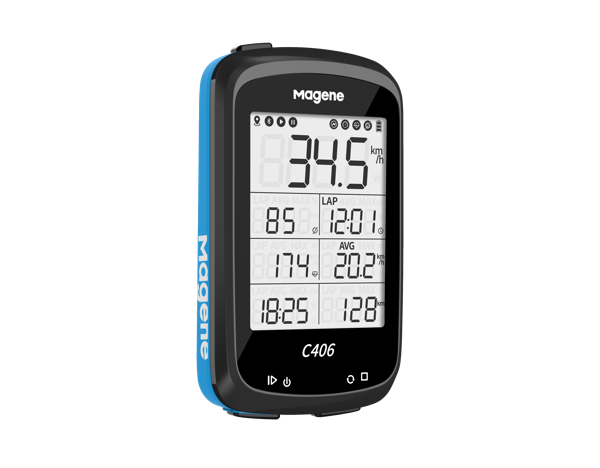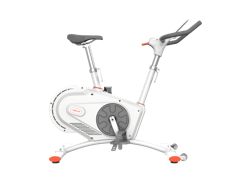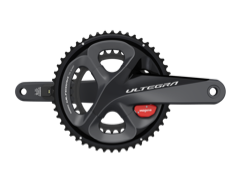The most common bicycle injuries are overwork injuries. Common injuries include finger numbness, back pain, knee pain, wrist numbness, and others. The main damage factors include overtraining, incorrect saddle position, insufficient preparation activities, etc.
Knee Pain
Cycling is a relatively gentle exercise. It has a relatively small weight on the knee joint. When riding a bicycle, it can reduce the weight of the knee and reduce the knee injury rate. But this is in the premise of the correct riding posture. The wrong or improper riding method can lead to serious consequences and the damage to the knee will be much greater than the other sports injuries (accounting for about 80% of all knee injuries). Knee injury is something that all cyclists cannot ignore.
Treatment
Choose a light gear ratio or an easier route so your swing can be at least 80 revolutions per minute.Remember to switch sitting or standing position when climbing a hill to make your muscles fully exercised.Adjust the saddle to the appropriate height. The height can be figured out by two methods: one is the length of your leg *0.886, and the other is to sit on the saddle and keep your knee slightly bent at the pedal bottom position.Besides, the self-locking pedal and the lock shoe have a good auxiliary function for correcting the bicycle riding posture and can correct the posture deformation caused by the habit or fatigue caused by the long-distance riding, thereby greatly reducing the riding to the knee.Do pay attention to the warm-up exercise! When cycling in cold weather, wear knee pads or long pants!
Fracture
Fracture is also common for cyclists. If it is an invasive fracture, the bone may also protrude from under the skin. For cyclists, the most vulnerable part of the fracture is the clavicle.
Treatment
Before the arrival of professional medical personnel, take care of the injured driver. The fracture can only be handled by a doctor.If it is an invasive fracture, cover the wound with a clean cloth and then tie it up to prevent blood from flowing out of the wound.Use a bandage or splint to hold the injured part.
Waist Pain
Lumbar muscle strain is a common chronic injury for cyclists. The main causes of injury include that the lumbar muscle is in an excessively stretched state for a long time, the preparation activity is insufficient, or the lumbar muscle strength is insufficient.If you have not been riding a bicycle for a long time or are not suitable for cross-country cycling, you may feel waist pain. This pain sometimes extends to the legs!
Treatment
The more you ride, the stronger your muscles on your back!The abdominal muscles and back muscles support the waist, so exercise these parts during training!High-quality double shock-absorbing bicycles also help to reduce the pain in the waist!
Neck Pain
If you stretch your neck for a long time, your neck muscles will feel sore. This happens during cycling.
Treatment
Check your riding posture. If you make your upper body stretches straight and the back arches, the neck muscles are always in a state of tension! The handlebars should not be caught too tightly, the elbows and shoulders should be sinking; the whole body is relaxed to ensure that the upper body is flexible!Regularly massage the tight neck muscles, or develop a softer habit. If the pain is more severe, please massage the doctor or perform physical therapy to relieve the pain in the neck!Wear professional non-slip glasses to avoid the problem that the glasses caused by sweating.
Skin Abrasions and Inflammation
Skin abrasions are not serious, only capillary damage, blood infiltration into the surrounding muscle tissue. However, if dust, sand and other foreign matter enter the wound, it will cause wound infection. When this happens, the rider will feel very uncomfortable. Inflamed areas are usually the groin, inner thighs, feet, and neck.
Treatment
The wound needs to be cleaned. To keep the wound clean, wear loose clothes.use Vaseline or tea tree oil to wipe the area that is prone to inflammation, and lubricate to protect it.Pay attention to personal hygiene, body, and clothing should be treated in time for antibacterial treatment.
How to prevent injuries?
The most effective way to minimize sports injuries is to prevent them in advance.
Every biker or cyclist should keep learning professional skills and keep good neuromuscular coordination to control the bike. The ability to control the bike can be trained.
Equipment factor. Before you start your race/trip, be sure that the bicycle and the various components (especially the tires) are in good condition and are regularly repaired. If traditional steel rings and tubed tires are used, it should be ensured that there is a protective device between the inner tube and the tire.
The handlebar grip should be able to wrap the handle completely without exposing the metal; if the handle attachment is used, it should be bent or padded and not facing upwards. Helmets are very important to prevent head injuries. Other protective devices such as goggles are also recommended.
If you liked this post, don’t forget to share so that others can find it, too.







